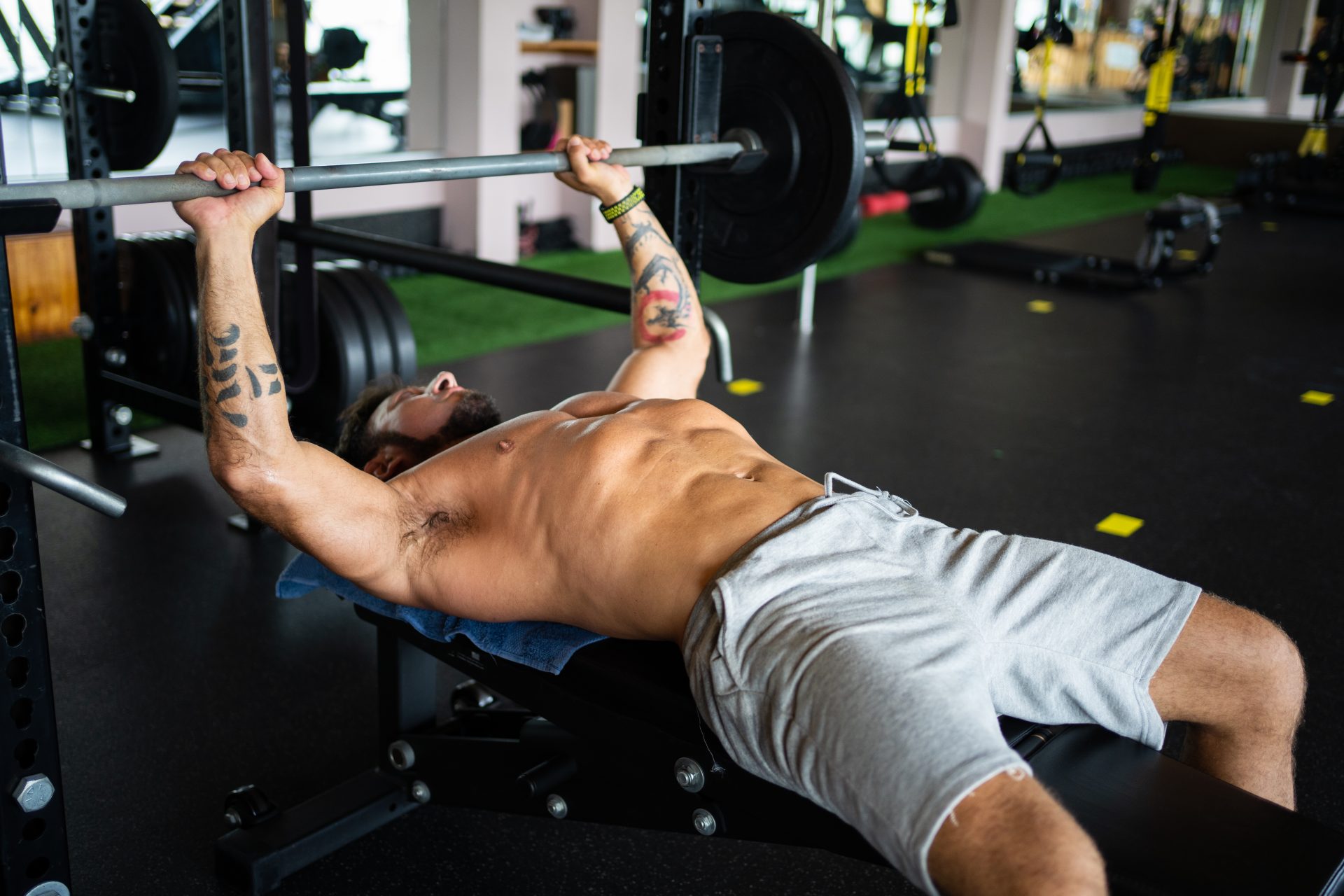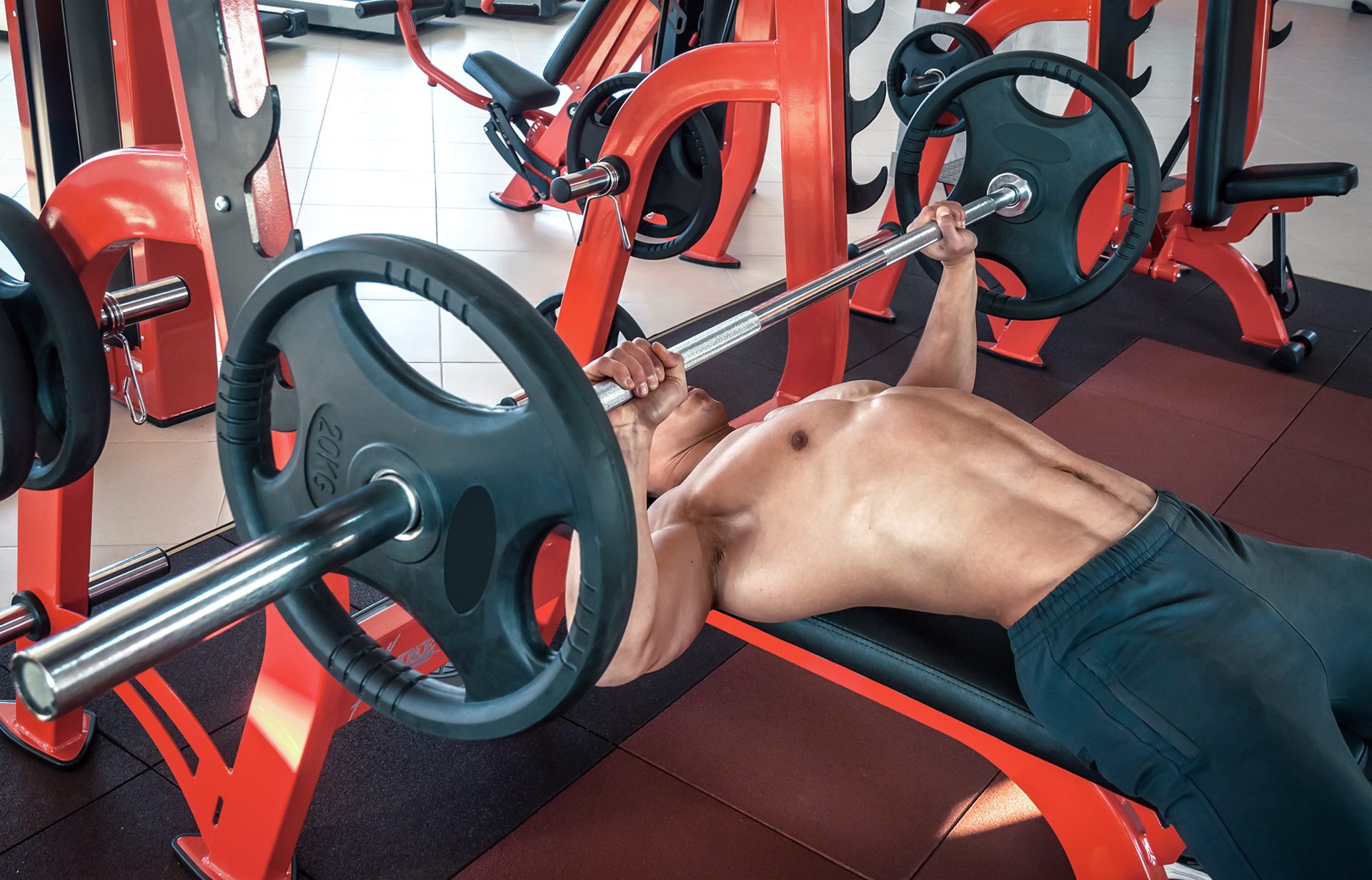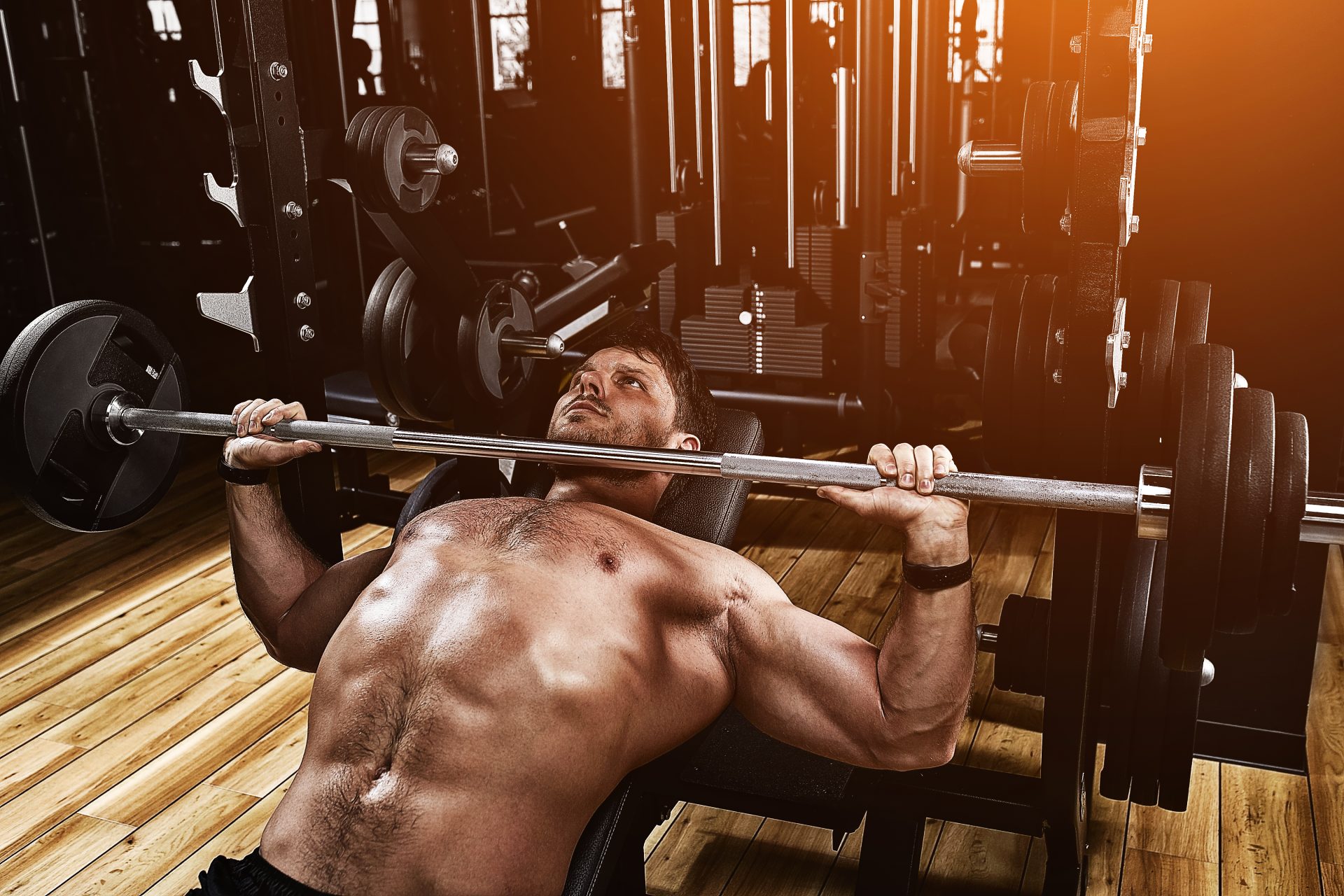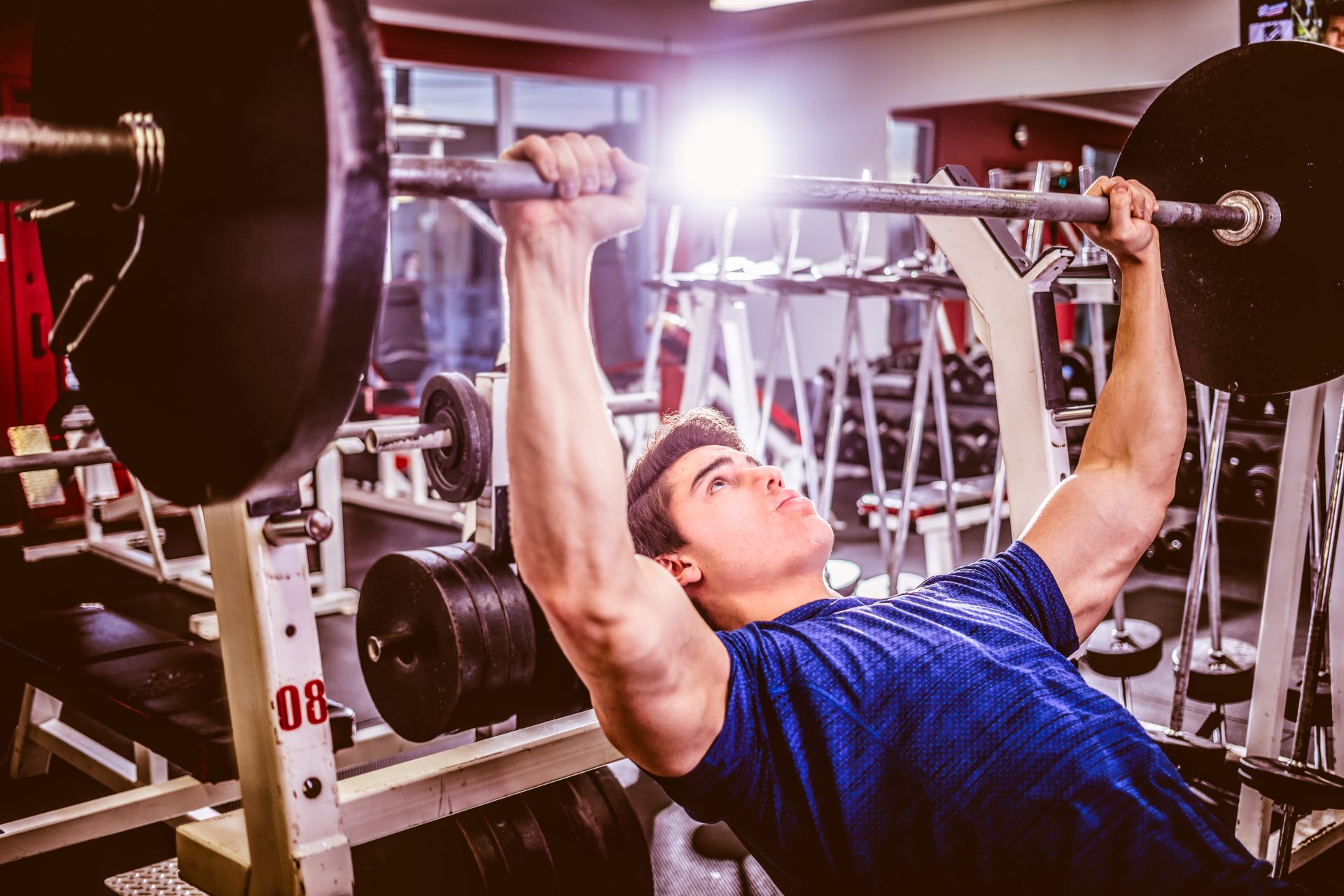The bench press is an important strength exercise that can help you build muscle and increase your overall fitness level. It’s a compound exercise that involves pressing a barbell loaded with weights up from chest level to arm’s length above the body. Bench pressing works several muscle groups at once, including your chest, triceps, and shoulders. In this comprehensive guide, we’ll dive into everything you need to know about the barbell bench press, including proper form, benefits, variations, and more.
Contents
What is the Barbell Bench Press?
The barbell bench press is a weightlifting exercise that involves pressing a barbell loaded with weight plates upward from a lying position on a flat bench.
The movement is primarily focused on the chest muscles, but it also recruits the triceps and shoulders.
The barbell bench press can be performed with different hand positions, including a wide grip, medium grip, and close grip, each targeting slightly different muscle groups.
What Dumbbells to Practice Bench Press With?
Barbells come in various shapes, sizes, and weights which are determined by the weight plates. Standard barbells are usually 7 feet long and weigh around 45 lbs empty.
Olympic barbells are slightly longer at 7.2 feet long and weigh around 44 lbs without any plates attached.
Both standard and Olympic bars are designed to be used with specific sizes of weight plates.
Standard bars are designed to be used with 1-inch diameter weight plates while Olympic bars have 2-inch diameter openings for their weights.
It’s important to know which type of bar you need before you start shopping for weights or accessories like collars or clips.
How To Choose The Right Weight For Your Needs
When it comes to selecting a weight for benchmarking, it’s important to take into account several factors such as your current fitness level, experience with bench pressing, goals, etc.
If you’re just starting out with bench pressing or if you’re new to strength training in general then it could be beneficial to begin with a lighter weight until you become more comfortable with the movements involved in the exercise.bench pressing
As you become more experienced with lifting weights it might be necessary to gradually increase the amount of weight in order for continual progressions in strength building over time.
Additionally, it also helps if you have access to a spotter when attempting heavier lifts so that they can provide extra support when needed during each set of reps!
Check this video from Jeff Nippard:
How to Perform the Barbell Bench Press
To perform the barbell bench press, follow these steps:
- Lie flat on a bench with your feet firmly planted on the ground.
- Grasp the barbell with your hands slightly wider than shoulder-width apart, or use a grip that is most comfortable for you.
- Remove the barbell from the rack and hold it above your chest with arms extended.
- Lower the barbell towards your chest, keeping your elbows close to your sides.
- Pause briefly when the barbell touches your chest, then press upward with your chest and triceps until your arms are fully extended.
- Repeat for the desired number of repetitions.
It’s important to maintain proper form throughout the exercise to avoid injury and get the most out of the barbell bench press.
Keep your back flat on the bench, and don’t allow your hips to lift off the bench during the exercise. Also, keep your eyes focused straight ahead, and avoid arching your back.
Variations of the Barbell Bench Press
There are several variations of the barbell bench press that target different muscle groups (trusted source) and offer a different challenge. Some of the most popular variations include:
- Incline bench press: This variation is performed on an incline bench, which places more emphasis on the upper chest.
- Decline bench press: This variation is performed on a decline bench, which places more emphasis on the lower chest.
- Close grip bench press: This variation involves using a close grip on the barbell, placing more emphasis on the triceps.
- Dumbbell bench press: This variation involves using dumbbells instead of a barbell, offering a more isolated workout for the chest, triceps, and shoulders.
Safety Tips When Using a Barbell
It’s always important to practice proper form and technique when performing any kind of physical activity.
However this is especially true when engaging in exercises like bench presses where there is potential risk involved due to lifting heavy objects off your chest area repeatedly throughout each set of reps!
Before beginning each session make sure you set up correctly by lying flat on your back on the bench pad provided with feet placed firmly flat on floor beneath legs so body remains stable throughout movement.
Secondly make sure hands grip handle evenly while controlling descent phase (when lowering) & ascent phase (when pushing).
Additionally having someone act as spotter can help provide added support/safety should something go wrong during lift!
Lastly taking breaks between sets can help ensure proper rest & focus needed before reengaging in next round reps!
Bench Press is Great For Muscle Pump!
Muscle pump refers to the temporary increase in size and fullness of a muscle during or after exercise, caused by increased blood flow to the muscle. Check our article “What Is A Pump Workout – The Science Of Muscle Pumps”
As for the bench press, it is a compound exercise that targets multiple muscle groups, including the chest muscles, triceps, and shoulders.
So, yes, bench press can be a good exercise for the pectoral muscles (also known as chest muscles).
However, it’s also important to include a variety of exercises to target the chest muscles from different angles and ensure overall development.
Ideal for Strength Training Routine
The barbell bench press is an important exercise in any strength training routine.
Not only is it an effective way to add strength and size to your chest, shoulders and triceps, but barbell weight also allows you to maximize your potential.
This simple yet effective compound movement allows you to use heavier weights than other exercises and target major muscle groups at once.
By changing the angle of the barbell, you can alter the muscles worked as well as keep your body guessing for maximum results.
Whether you are trying to increase muscle mass or improve body strength, the barbell bench press is a great place to start for even beginner lifters.
Stack Those 45 pounds Plates!
Bench press barbells have become a staple piece of weightlifting equipment in gyms around the world.
But how much does a standard bench press barbell weigh?
It turns out that the average barbell used for this classic strength training exercise weighs 45 pounds.
That’s 20 kilograms, which is heavier than most people think.
While it may not seem like much, these bars often come with additional plates or weights to increase resistance and challenge.
So, even though the bar itself appears light, when it is filled up, it can be surprisingly heavy!
Last Thoughts
Bench pressing is an incredibly effective way to build strength and muscle mass quickly and easily at home or at the gym.
However it is important that all safety measures & proper techniques are followed in order ensure best results without risking injury or damage!
This comprehensive guide has outlined everything from understanding different types of bars & weights available through selecting right one for individual needs through safety tips when using barbell – so now there’s no excuse not get moving!
So grab those dumbells & get ready lift some iron – happy lifting folks!





